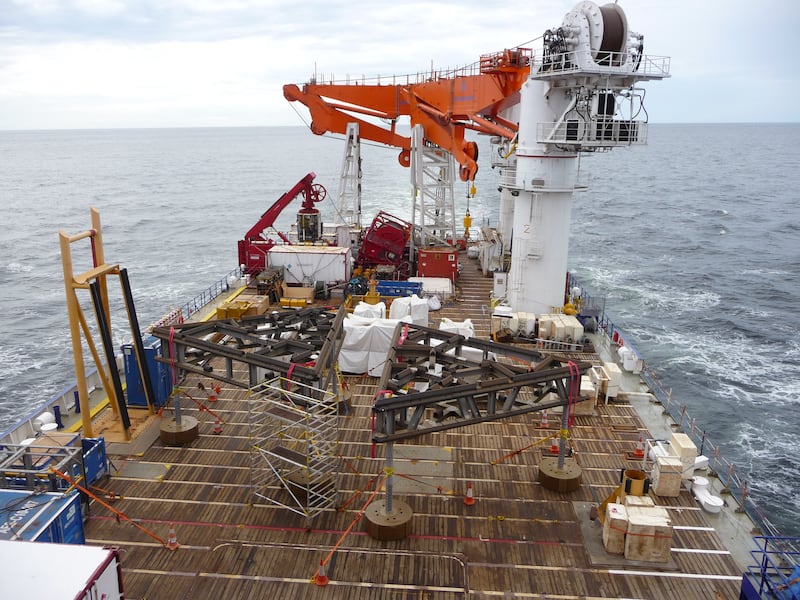Scientists have documented seasonal migrations of deep-sea fish across the seabed for what is said to be the first time.
Researchers analysed more than seven years of deep-sea photographic data from two observatory platforms, 1,400m (4,593ft) deep, off the coast of Angola in west Africa for the project.
They based their analysis on all the seafloor fish they saw in the photographs, which included species from 11 different families, including eels, grenadier fishes and sharks.
They linked seasonal patterns in primary productivity – the amount of energy produced by phytoplankton in the surface ocean above study sites – with the behaviour of fish deep below.

Scientists said the study now provides evidence of cycles of movement across the seafloor in deep-sea fish, and the study authors believe these movements could be happening in other locations across the world too.
However, more research is needed to find out where the fish are moving to.
The project was led by the University of Glasgow and Nova Southeastern University in Florida.
Lead author Rosanna Milligan, assistant professor at Nova Southeastern University, who started the work at the University of Glasgow, said: “We are extremely excited about our findings, which demonstrate a previously unobserved level of dynamism in fishes living on the deep seafloor, potentially mirroring the great migrations which are so well characterised in animal systems on land.
“The work really adds to our understanding of movement patterns in deep-sea fishes and suggests reasons for their behaviours.
“Because we were able to link the abundances of fish observed at the seafloor to satellite-derived estimates of primary productivity, our results suggest that even top-level predators and scavengers in the deep oceans could be affected by changes filtering down from the surface of the ocean.”

The University of Glasgow said the work was only possible because of an international collaboration between industry, academia and government, involving more than 10 organisations across Angola, the UK and the US.
Dr David Bailey, senior lecturer in marine biology at the University of Glasgow’s Institute of Biodiversity, Animal Health and Comparative Medicine, said: “Animal migrations are really important in nature, because when animals move from place to place, they transport energy, carbon and nutrients.
“We were only able to discover this behaviour because of the collective expertise and decade-long commitment of the universities and industry partners.
“These kinds of long-term projects and the datasets they generate are vital to understanding ongoing change in the oceans and how they may be impacted in the future.”
– The study is published in the Journal of Animal Ecology.








